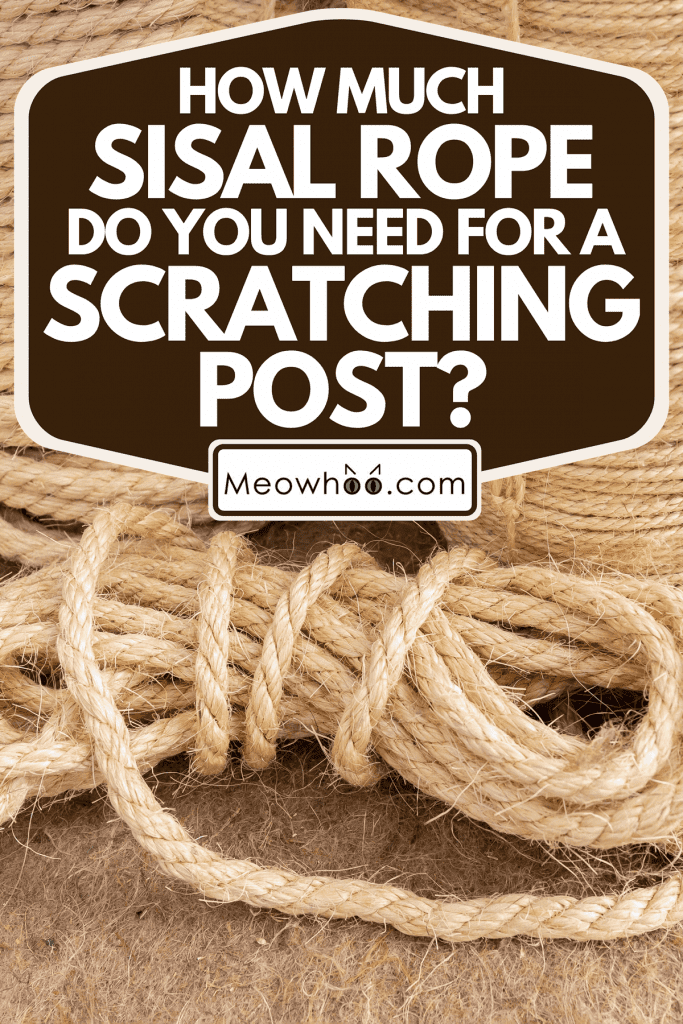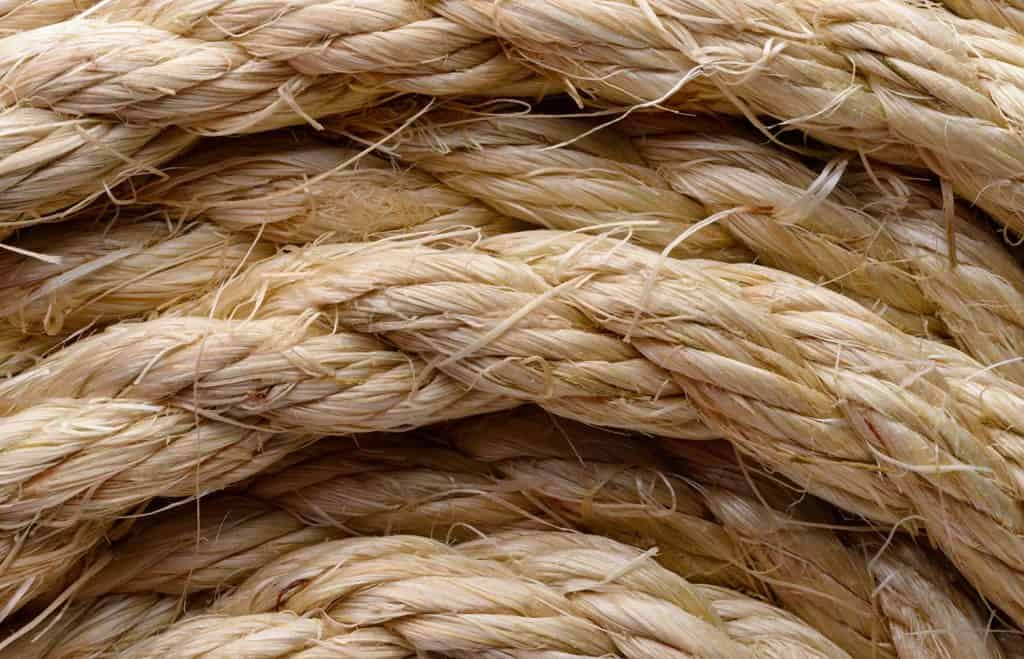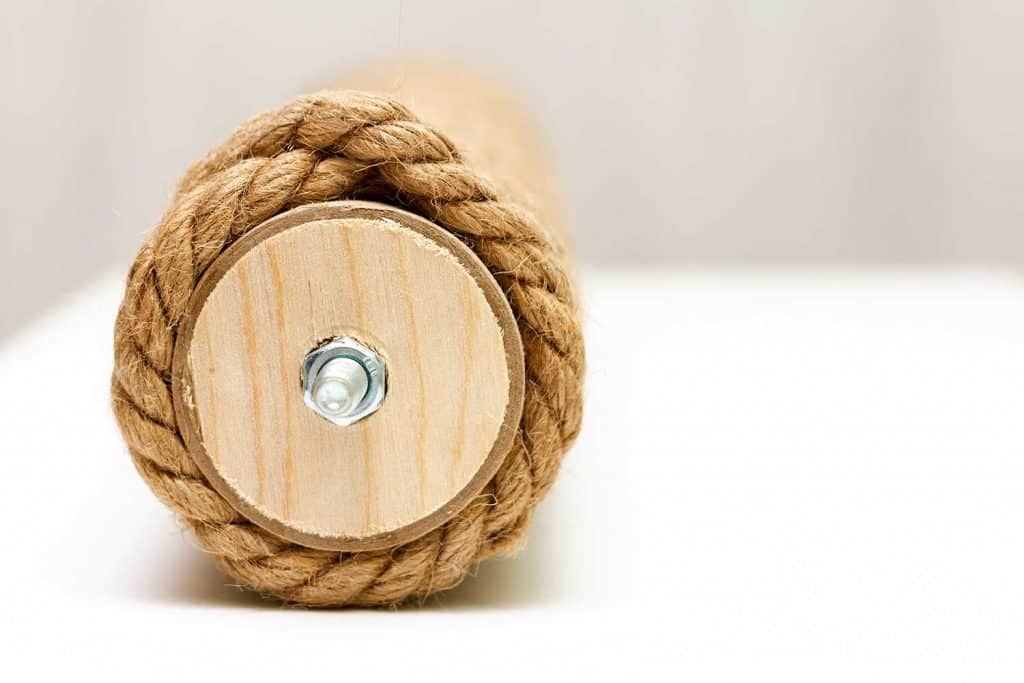Does your pet love to scratch? You may have noticed it likes to claw at furniture. So, how about making a special scratching post for it? Sisal rope is a great choice for this, and your pet will love it! But the big question is: "How much sisal rope will you need?"
In this article, we'll guide you on how much sisal rope is needed to create a scratch post. It's not the same for all, it depends on things like how thick the rope is and the size of the post.
The guide won't just tell you how to figure out the right amount of rope. It will also share tips on getting your pet to really enjoy their new scratch post.
This guide is handy for those who enjoy doing it themselves or if you're looking to fix up an old scratch post. Knowing the right amount of sisal rope you need can save you money and time, and even your furniture!
Ready to learn more? In this guide, you will find out how to measure the sisal rope, decide on the best size, and finally, make a wonderful scratch post your pet will love. We're here to help answer your questions and make sure you know everything you need.

Scratching Posts and Sisal Rope: What's the Deal?
Your pets love a good scratching post to stretch and exercise their claws. And sure, they can be a little fussy about the kind of rope you use. But remember, the right material makes for healthy scratching and happy pets.
Now, one rope that gets the thumbs up from our furry pals is sisal. However, how much sisal rope you need for the scratching post can be a puzzle.
The amount of sisal rope you'll need hinges on a few things:
- Size or thickness of the sisal rope
- Height and circumference of the scratching post
You see, the calculation comes down to the number of times you'll wrap the sisal rope around the post. Once you've got this figure, multiply it by the post's circumference.
Whether you're putting together a DIY scratch post or giving an old one a fresh lease of life, knowing the right rope quantity can spare your wallet. Plus, if the rope is securely fixed on the post, your pets are more likely to enjoy using it.
How To Calculate The Sisal Rope Needed For A Cat Post
Before buying sisal rope, calculate the length you need by following the procedure below:
- Select the sisal rope thickness you need for the scratch post.
- Measure the length of the scratch post.
- To determine how many times you need to wrap the rope on the post, divide the length by 1/4. For example, if you select a 36-inch post and 1/4-inch rope, you will need to wrap the post 144 times. If you choose a 3/8-inch rope, you will divide it by 0.375.
- Wrap some rope on the post to measure its circumference. You can do the same for square-shaped posts.
- After doing so, multiply the circumference by the times you need to wrap the post.
- Buy enough sisal rope to cover the scratch post. You can buy sisal rope by the foot or in 100 feet coil.
Continue reading to learn the specific details on measuring the scratching post length.

How Do You Measure A Sisal Rope Scratching Post?
When measuring for the scratching post, you must consider your cat's condition and scratching behavior. Some cats can stretch long, while some smaller or weaker cats have a shorter reach. The scratching position varies depending on the direction in which the cat is comfortable.
In general, it is best to choose a scratching post that allows your cat to stretch itself on the post. You should pick a tall post if your cat is tall. Measure the cat while standing on its hind legs and stretching its front legs as far as possible. Do not include the length of the tail when measuring.
Also, note that the horizontal scratch post height will differ from the vertical scratch post. There is a difference in the scratching angle. Horizontal scratchers are shorter because cats usually bend or sit over them when scratching.
You can buy a vertical scratching post that is around 31 inches. Tall cat breeds can have as much as 41 inches for the height of the post. For the horizontal type, 18 inches is already good.
Find out more from this article: How Tall Should A Cat Scratching Post Be?

What Size Sisal Rope Is Used On A Scratching Post?
After you determine the suitable scratching post height, the next thing to do is select the right sisal rope thickness. The common sizes for sisal rope are 1/4 or 3/8 inches. It is easier to attach the 1/8-inch rope on the post, yet the 3/8-inch is more durable.
A 1/2-inch rope is also available, but it is not that thick and is less durable than the other two options.

How Do You Attach Sisal To A Scratching Post?
Before you start attaching the sisal rope, you must prepare the following supplies:
- Spool of sisal rope (untreated)
- Scissors
- Two 1 and 1/2-inch nails
- Glue gun and glue stick (or quick-dry glue that is non-toxic for cats)
- Old or new scratching post
After gathering the supplies listed, you can now attach the sisal. You can do this as a DIY project or with someone's help. Follow the directions below:
- Remove the old sisal covering on the scratch post. Use pliers to detach if there are nails or staples on the post. Otherwise, use a scraper and scissors to remove the glued sisal.
- After disposing of the old sisal, start by gluing the sisal rope from the bottom and going up. Attach the end of the rope by nailing it on the platform.
- Add glue as you wrap around the post while pressing the rope firmly.
- Continue wrapping until you reach the topmost part of the post. Cut and glue the sisal.
- After the glue dries, use a nail to secure it on the post. Make sure that you conceal the nails properly to avoid any injury to the cats.
- If there are gaps on the post, fill them in by following steps 2 to 3.
Remember the following tips when choosing sisal for a scratching post:
If you notice that your cats do not use the post, they might not like the scent of a chemically-treated sisal rope. You might need to replace the wrapped post with an untreated sisal rope. You can buy one online or in-store, but check if it is a natural fiber from the sisal plant.
Aside from the rope, the glue you use may not be pleasing to the cats. The glue you use might give off a toxic smell that can harm cats.
Check out this post to learn What Kind Of Glue Is Safe To Use On Cat Trees And Scratching Posts?

Why Is Sisal Rope Good For Scratching Posts?
Cats love sisal rope scratching posts. Sisal can withstand the tenacity of your cats' claws because of its proven durability. Sisal comes from the agave plant, an extremely stiff material popular for cat scratching posts and trees. It is also an environment-friendly material.
While most cats like their scratching posts to resemble the texture of tree bark, sisal's rough texture can easily entice cats to use the post. The rope makes cats feel as if they are in the wild. If you choose sisal, you won't have to worry about damage to your furniture.
Cats favor sisal while clawing because the material allows a smooth shedding of their claws. The sisal fibers will not become sharp, and your cats will keep coming back scratching on the post.
Click Here To See This Sisal Rope On Amazon
Is Jute Rope The Same As Sisal?
Both jute and sisal rope are natural fibers. You can use both types of rope for scratching posts. Yet there are distinct properties you will see as follows:
| Sisal | Jute |
| Made from agave plant fiber | From stalks of the jute plant |
| Stiffest and most coarse | Soft natural fiber |
| Creamy white hue | Natural brown hue |
| Most durable and long-lasting |
Least durable |
| More expensive | Less expensive |
Jute is also common for making burlap bags, sacks, and carpet backing. Its softness feels like wool. If your cats want a softer texture for their scratch posts, you can still select this material.
Perfecting Your Scratch Post: Sisal Rope Quantity and Attachment Tips
Sisal rope is an excellent choice for cat scratching posts. If you plan to make one or replace a worn-out post, purchasing the right amount of rope you need will save you costs. You will need to choose the suitable rope thickness and determine the length and circumference of the post.
You can attach the rope to the scratching post after picking the right height and sisal rope size and length. Follow the directions to attach the sisal. Also, be careful of nails and glue that can harm your cats. With the right sisal rope length, you can create a fantastic scratch post for your cats.
Read more about cat-scratching posts in these other articles:
How Often Do Cats Use The Scratching Post?
Does A Declawed Cat Need A Scratching Post?
Some elements on this page may have been created by our team using advanced AI to provide you with top-notch cat inspired ideas. Read more about our AI Content Policy.

